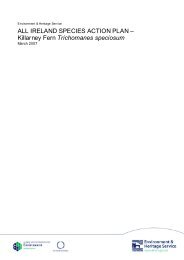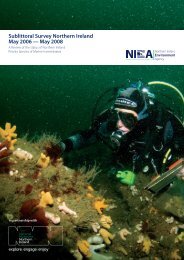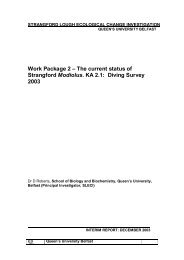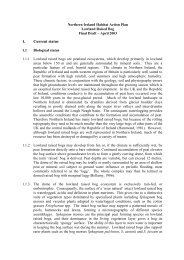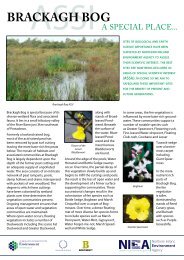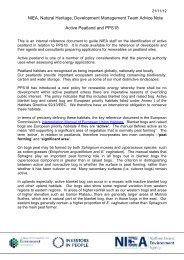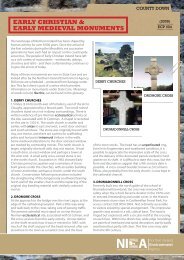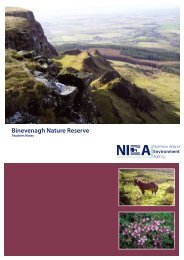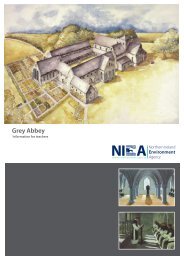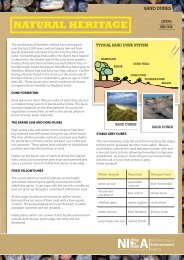Municipal Waste Data Monitoring and Reporting: Interim Guidelines
Municipal Waste Data Monitoring and Reporting: Interim Guidelines
Municipal Waste Data Monitoring and Reporting: Interim Guidelines
Create successful ePaper yourself
Turn your PDF publications into a flip-book with our unique Google optimized e-Paper software.
3.5 DATA MEASUREMENT, RECORDING & DEVELOPMENT OF A DATABASE (STEP 3)<br />
Having identified all the data relevant to the calculation of KPIs <strong>and</strong><br />
performance management <strong>and</strong> the ways by which the data are generated, the<br />
next step is to develop methodologies for: (i) obtaining the data in the<br />
required format, <strong>and</strong> (ii) storing the data in an electronic format.<br />
3.5.1 <strong>Data</strong> Measurement<br />
The majority of waste data necessary for performance management are<br />
required in weight format – i.e. tonnes.<br />
In view of the significance of the issue of accurate weights, for auditability <strong>and</strong><br />
consistency of measurement, the Department intends to introduce the<br />
m<strong>and</strong>atory use of weighbridges after a transition period. The timing <strong>and</strong><br />
transition arrangements for this policy will be subject to consultation with<br />
District Councils <strong>and</strong> industry.<br />
In cases where the data are not generated in this format, District Councils<br />
should adopt st<strong>and</strong>ard weight conversion factors <strong>and</strong> also document the<br />
procedures for generating the data (i.e. conversion procedure), for ease of<br />
reference for all the staff who may be involved in gathering the data.<br />
Wherever possible, the collection <strong>and</strong> processing streams should be arranged<br />
such that waste collection vehicles are routed via weighbridges or other<br />
facility that can produce an accurate record of the weight of waste being<br />
collected or transported.<br />
Annex E provides a selection of st<strong>and</strong>ard weight conversion factors for used where<br />
weighing is not currently practicable <strong>and</strong> HM Customs & Excise methods for<br />
calculating weights at l<strong>and</strong>fill sites where weighbridges are not available. District<br />
Councils are required to adopt the factors listed in Annex E, as far as is practicable.<br />
This list is not exhaustive, <strong>and</strong> as a result any other conversion mechanisms adopted<br />
by District Councils should be clearly documented within the reporting structure.<br />
The Department is aware difficulties may arise with regard to timing <strong>and</strong><br />
completeness of data provided by waste contractors. However, the<br />
Department would remind District Councils of the provisions of Article 44 of<br />
the <strong>Waste</strong> <strong>and</strong> Contaminated L<strong>and</strong> (NI) Order 1997, which provides a<br />
mechanism for enforcement of data collection for both the Department <strong>and</strong> the<br />
District Councils.<br />
3.5.2 <strong>Data</strong> Recording<br />
In order to maintain the consistency of data collection, st<strong>and</strong>ard data<br />
recording forms should be used by operations staff <strong>and</strong> contractors. Examples<br />
of <strong>Data</strong> Recording Forms / Proformas are shown in Annex F as a guide. These<br />
may be adapted by District Councils to suit their operations.<br />
Where data are not gathered on a frequent regular basis (i.e. daily or weekly),<br />
District Councils should determine an appropriate collection / sampling<br />
MUNICIPAL WASTE DATA MONITORING AND REPORTING: INTERIM GUIDELINES 8



